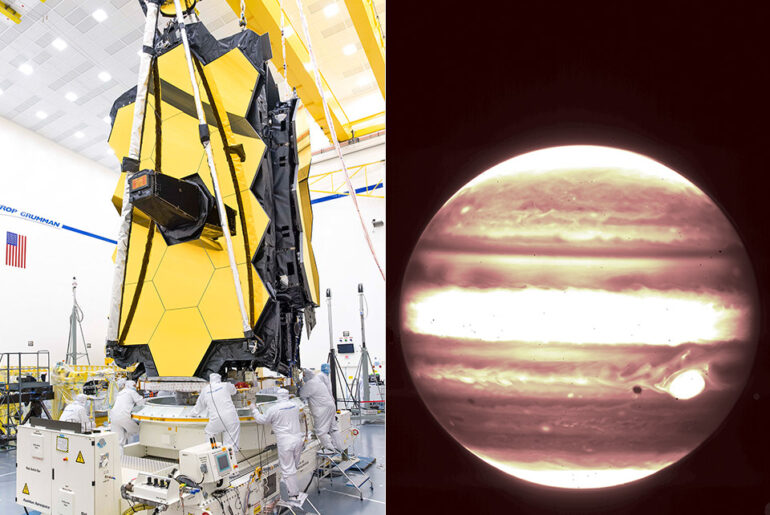
NASA’s James Webb Space Telescope continues to amaze, and the latest images are of Jupiter captured with the NIRCam instrument’s short-wavelength filter. We see the gas giant’s distinct bands that encircle the planet as well as the Great Red Spot, a storm large enough to swallow Earth completely. The spot only appears white due to how the Webb’s infrared image was processed.

The images above show Jupiter and its moons Europa, Thebe, and Metis taken by the James Webb Space Telescope’s NIRCam instrument 2.12 micron filter. It also captured some of Jupiter’s rings without any issues since Webb can now track objects that move as fast as Mars, which has a maximum speed of 30 milliarcseconds per second. Webb may even be able to shed some light on if Europa actually glows-in-the-dark.
- BRIGHT, SHARP VIEWS ANYWHERE: Unlike many beginner telescopes, this quality refractor features fully coated glass lenses and a 70mm aperture for...
- PERFECT FIRST TELESCOPE FOR BEGINNERS: Designed for adults and kids to enjoy together, this beginner-friendly telescope sets up in minutes and...
- EASY NO-TOOL SETUP: No complicated assembly or tools needed. The full-height tripod and telescope tube set up in seconds and pack neatly into the...
The Jupiter images in the narrow-band filters were designed to provide nice images of the entire disk of the planet, but the wealth of additional information about very faint objects (Metis, Thebe, the main ring, hazes) in those images with approximately one-minute exposures was absolutely a very pleasant surprise,” said John Stansberry, observatory scientist and NIRCam commissioning lead at the Space Telescope Science Institute.






